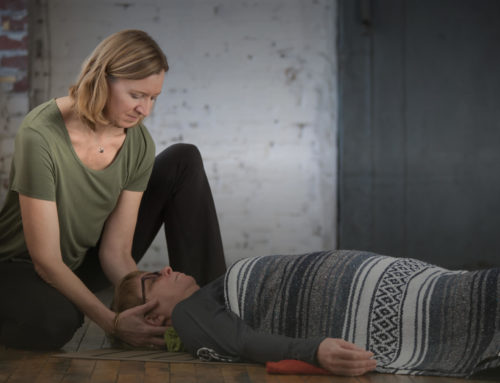One summer 4 years ago, I was traveling back from Montreal via Vermont and about 4 hours away from home. It was then I heard a story on NPR about the benefits of napping. Very dangerous subject for someone on a long drive but interesting nonetheless which kept me alert. I love napping but seem to always have this feeling of guilt when I did “indulge”. My father was always a napper with no qualms about it at all. I think this feeling of guilt stems from my mother berating my father for napping. Well, the radio show assuaged those feelings. Finally guilt-free napping. Now just to find the time to get one in!
Here is Dr. Weil’s take on Napping. Enjoy but stay awake until the end of the article, then go find your NAPVANA.
Is Napping Healthy?
Published: 6/13/201
Published: 6/13/201

Each Thursday in June the Daily Tip will cover aspects of aging gracefully, courtesy of Dr. Weil on Healthy Aging.
Studies on sleep and the opinions of sleep experts are convincing: napping has value. People who nap generally enjoy better mental health and mental efficiency than people who do not. The quality of their nighttime sleep tends to be better as well. Unfortunately, finding opportunities to rest during daylight hours in our society is not so easy – the North American culture is actively opposed to the whole concept, bombarding us with stimulation in more and more places and times.
If you want to embrace the concept of napping – as many cultures worldwide do – consider the following:
Studies on sleep and the opinions of sleep experts are convincing: napping has value. People who nap generally enjoy better mental health and mental efficiency than people who do not. The quality of their nighttime sleep tends to be better as well. Unfortunately, finding opportunities to rest during daylight hours in our society is not so easy – the North American culture is actively opposed to the whole concept, bombarding us with stimulation in more and more places and times.
If you want to embrace the concept of napping – as many cultures worldwide do – consider the following:
- Accept napping as a positive thing. Remind yourself frequently that napping can make a day more productive – it is actually the opposite of being lazy.
- Do not fight the body’s desire to nap. This will result in unpleasant or unproductive naps.
- Take naps when you can. If your schedule does not permit a nap every day, consider taking productive naps as a passenger in cars, trains, and airplanes.
- Consider time and duration. Napping for too long, too often, or at the wrong time of day can be counterproductive. See what length and schedule works best for you.
- Napping can mean just taking a break. Lying on a hammock or just staring into space is the essence of rest – it is not doing that refreshes you in body and mind.
The Breath
Elevator Breath
(compliments of Rudy Pierce, gentleyogi.com)
The Elevator Breath is a simple, yet profound breathing technique. You can do it just about anywhere.
Inhale to a count of four. Then exhale to a count of four (same count as the inhale.) Go at your own pace. No strain. Smooth and easy.
Then inhale to a count of five. Exhale to a count of five.
The breath can be held in or out for a moment in between the inhale and exhale. If that doesn’t feel okay then keep your breathing continuous.
Then Inhale to six. Exhale to six.
You can use the word “inhale” or “exhale” instead of the number one if it’s helpful, like this:
Inhale two, three, four, five, six.
Exhale two, three, four, five, six.
Inhale two, three, four, five, six, seven.
Exhale two, three, four, five, six, seven.
Continue for a few more rounds. You may increase the count to further lengthen the breath if you can remain comfortable. The number you count to doesn’t matter; there’s no goal of achieving any particular count. It’s your breath, your body.
Now release all control of the breath. Observe the breath as it self-regulates.
And notice how you feel….physically….emotionally….mentally.
The Poses
Reclined Twist
Extras: blanket for warmth
Benefits: Allows breath to come in to the rib cage and belly more freely. Detoxifying. Can reduce high blood pressure. Relieves fatigue and insomnia. Safe for a Prenatal twist.
This can be a very prop intensive pose but once you are in it, it is worth it. Begin with right side of body, place the bottom of your right foot against the wall with leg extended. Left leg is bent at a 90 deg. angle and propped up with two blocks and a bolster with maybe a blanket on top. at least two blankets, S-fold blankets, and/or pillows placed along spine for support, lengthwise. Extend your left arm out to the left side and lay it on a smaller stack of blankets either s-fold or triple-fold out to your side. Right arm extends out to the right. This means the left arm is at a higher elevation than right. Head can remain neutral to ceiling or turn to one side. Extra blankets can be placed in spaces that need more support. Neck roll for cervical spine and eye pillow.
*we are digging placing the arms in Goddess pose (not pictured) so try that one out as well. Place blanket support under arms.
Therapeutic Spinal Strip
Props: 1 rolled up blanket, lengthwise, 1 blanket double-fold, neck pillow
Benefits: reinvigorates the spine bringing fresh blood and oxygen. With deep breath, can give the effect of a massage on the spine.
Roll a single-fold blanket keeping the roll more on the flatter side. This becomes your spinal strip. Lay this strip down on the floor and place a double-folded blanket at one end (Letter T). Sacrum is on the double-folded blanket and carefully lay the spine and head down on rolled up blanket. Use a neck pillow in cervical curve. Arms relax by the sides, palms turned up. A variation is to have knees together, feet wide apart. Stay for about 5 -8 minutes. A nice alternative to the Heart Bench.
Supported Lumbar Stretch
Props: Rolled up blanket, eye pillow
Extras: blanket for warmth
Benefits: Lengthens lumbar spine, releases tension in lower back.
Roll one blanket thick enough to fit comfortably in your lumbar curve, resting at your waist not your sacrum (so right behind the navel). Test this out by laying down on it. Can lay on any extra blanket. Legs can be straight or bent. If bent, allow knees to fall into each other, feet outward. Arms to the side. Belly should not be lifted. Lay here for 5 to 7 minutes or come out when you feel ready. Bring knees to chest and windshield wipe them side to side to release.



Leave A Comment